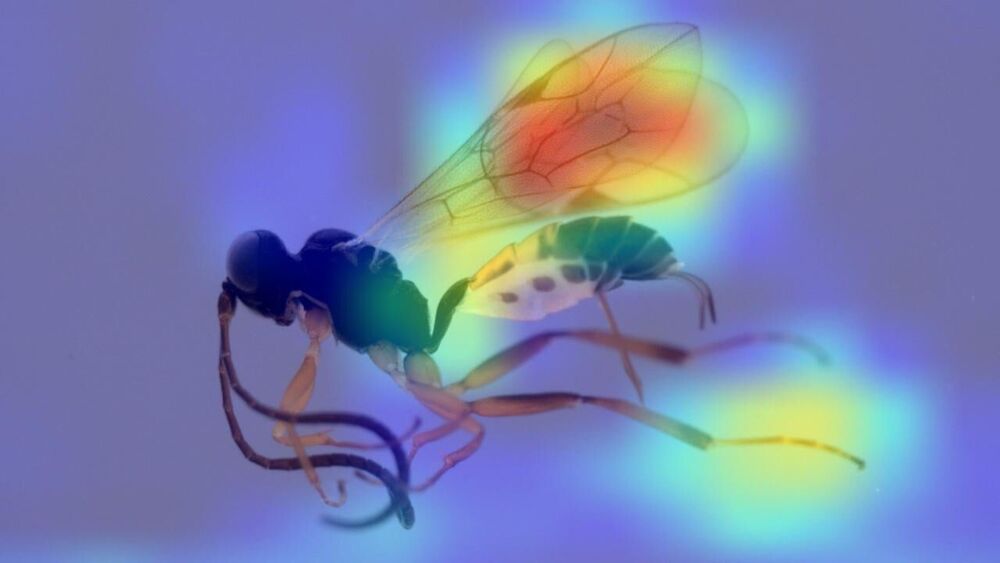Automation could aid biodiversity monitoring.



Banner Smoked Fish Inc. is recalling 43 of its s moked fish products in all package sizes, all package types and all lots, because of a potential Listeria monocytogenes contamination.
The problem was discovered through FDA routine inspection, and the products were found to be processed under unsanitary condition.
The recalled smoked fish were distributed through retail stores and also online in the New York, New Jersey, Illinois, Pennsylvania, California, Florida, Nebraska, Arizona, Massachusetts, Maryland, Virginia, Nevada, Oregon, Wisconsin, North Carolina, South Carolina and Georgia.

Antivirus software company Norton has released a new crypto product that allows users to mine ether (ETH) from their personal computers.
NortonLifeLock, formerly Symantec Corporation, has released a new crypto product that allows users to mine ether (ETH) from their personal computers.
The product, Norton Crypto, is currently available to select customers who use the company’s antivirus software called Norton 360. The public launch of the product is expected “in the coming weeks.”
How does the product work? A crypto-mining software is installed within Norton 360, which allows users to run it when their computers are idle.
Enrolling Tens Of Thousands Of Dogs, In 10-Year Study, To Unlock Healthy Aging Secrets — Dr Matt Kaeberlein, Founder / Co-Director, The Dog Aging Project, Professor, University of Washington, joins me on Progress, Potential, And Possibilities Nathan Shock Centers #Rapamycin #Dogs #Aging #Longevity #Healthspan #Geroscience.
#MitochondrialDisease
Dr. Matt Kaeberlein is Professor of Pathology, Adjunct Professor of Genome Sciences, and Adjunct Professor of Oral Health Sciences, at the University of Washington.
Dr. Kaeberlein received his PhD from MIT in Biology, did his post-doc in the Department of Genome Sciences, University of Washington, and his research interests are focused on basic mechanisms of aging in order to facilitate translational interventions that promote healthspan and improve quality of life.
Dr. Kaeberlein has published nearly 200 papers in top scientific journals and has been recognized by several prestigious awards, including a Breakthroughs in Gerontology Award, an Alzheimer’s Association Young Investigator Award, an Ellison Medical Foundation New Scholar in Aging Award, a Murdock Trust Award, a Pioneer in Aging Award, and the Vincent Cristofalo Rising Star in Aging Research.

The latest from Calico. A bit technical.
Reprogramming of ordinary somatic cells into induced pluripotent stem cells (iPSCs) was initially thought to be a way to obtain all of the patient matched cells needed for tissue engineering or cell therapies. A great deal of work has gone towards realizing that goal over the past fifteen years or so; the research community isn’t there yet, but meaningful progress has taken place. Of late, another line of work has emerged, in that it might be possible to use partial reprogramming as a basis for therapy, delivering reprogramming factors into animals and humans in order to improve tissue function, without turning large numbers of somatic cells into iPSCs and thus risking cancer or loss of tissue structure and function.
Reprogramming triggers some of the same mechanisms of rejuvenation that operate in the developing embryo, removing epigenetic marks characteristic of aged tissues, and restoring youthful mitochondrial function. It cannot do much for forms of damage such as mutations to nuclear DNA or buildup of resilient metabolic waste, but the present feeling is there is nonetheless enough of a potential benefit to make it worth developing this approach to treatments for aging. Some groups have shown that partial reprogramming — via transient expression of reprogramming factors — can reverse functional losses in cells from aged tissues without making those cells lose their differentiated type. But this is a complicated business. Tissues are made up of many cell types, all of which can need subtly different approaches to safe reprogramming.
Today’s open access preprint is illustrative of the amount of work that lies ahead when it comes to the exploration of in vivo reprogramming. Different cell types behave quite differently, will require different recipes and approaches to reprogramming, different times of exposure, and so forth. It makes it very hard to envisage a near term therapy that operates much like present day gene therapies, meaning one vector and one cargo, as most tissues are comprised of many different cell types all mixed in together. On the other hand, the evidence to date, including that in the paper here, suggests that there are ways to create the desired rejuvenation of epigenetic patterns and mitochondrial function without the risk of somatic cells dedifferentiating into stem cells.

Regulators on Friday said a new version of a popular diabetes medicine could be sold as a weight-loss drug in the U.S.
The Food and Drug Administration approved Wegovy, a higher-dose version of Novo Nordisk’s diabetes drug semaglutide, for long-term weight management.
In company-funded studies, participants taking Wegovy had average weight loss of 15%, about 34 pounds (15.3 kilograms). Participants lost weight steadily for 16 months before plateauing. In a comparison group getting dummy shots, the average weight loss was about 2.5%, or just under 6 pounds.

The Perseverance rover began a two-year mission to collect Martian soil samples this year. It’s the first of three missions, jointly sponsored by NASA and ESA, aiming to bring Martian soil back to Earth in hopes of finding evidence of past life. The total costs of the missions will likely exceed more than $9 billion.
MORE SO EXPENSIVE VIDEOS:
Why Japanese Eel Is So Expensive.
Why Black Opal Is So Expensive.
Why Ceylon Cinnamon Is So Expensive.
#Mars #Space #BusinessInsider.
Business Insider tells you all you need to know about business, finance, tech, retail, and more.
Visit us at: https://www.businessinsider.com.
Subscribe: https://www.youtube.com/user/businessinsider.
BI on Facebook: https://read.bi/2xOcEcj.
BI on Instagram: https://read.bi/2Q2D29T
BI on Twitter: https://read.bi/2xCnzGF
BI on Amazon Prime: http://read.bi/PrimeVideo.
Why two pounds of dirt from mars costs $9 billion | so expensive.

The Tsimane, an indigenous people who live in the Bolivian peripheries of the Amazon rainforest, lead lives that are very different to ours. They seem to be much healthier for it.
This tribal and largely isolated population of forager-horticulturalists still lives today by traditional ways of farming, hunting, gathering, and fishing – continuing the practices of their ancestors, established in a time long before industrialization and urbanization transformed most of the world.
For the Tsimane, the advantages are considerable. A study published in 2017 found that they effectively have the healthiest hearts in the world, with the lowest reported levels of coronary artery disease of any population ever recorded.